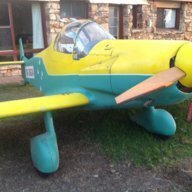Here is another Lancaster story (missed the anniversary by a few days):
🇦🇺 Interesting date in history yesterday, 78 years ago Lancaster A66-1 was flown under the Sydney Harbour bridge, here a bit of the story............
On This Day - 22 October 1943 - Lancaster 'Q' for Queenie illegally flown under the Sydney Harbour Bridge.
On this day, Lancaster B111 ED930 “Q for Queenie” -- with the RAAF tail number A66-1 -- made an unauthorised flight under the Sydney Harbour Bridge while on the 4th Liberty Loan tour (see 5 October). Originally sent to Australia as a prototype for local production (which did not eventuate), the aircraft was used after its arrival in June 1943 to promote sales of war savings bonds around Australia. “Queenie” arrived at Richmond on 20 October in preparation for carrying out a series of exhibition flights over Sydney. During one of these sorties, the crew -- captained by Flight Lieutenant Peter Isaacson -- decided to ‘buzz’ the building housing the headquarters of RAAF Eastern Area at Edgecliff, on Double Bay, before taking A66-1 beneath the Harbour Bridge in defiance of a 1931 regulation banning such flights. The Lancaster was not the first aircraft (nor even the last) to break this prohibition, but it was the largest. Isaacson later recalled that 'I was threatened with a court martial. Two authorities wanted to court martial me: Eastern Area in which the crime was committed and Southern Command to which I was attached at the time. I was told later there was a great fight among the bureaucrats of each of these commands as to which would court martial me. Apparently they could not agree on which should be the prosecutor and the idea either lapsed – or maybe is still being pursued by the successors to each of these commands!'�Peter Isaacson was also awarded the Air Force Cross, gazetted on 27th August 1943. The citation for this award reads: "Flight Lieutenant Isaacson was captain of the Lancaster aircraft which recently flew from England to Australia via the Pacific and subsequently carried out direct flights between Melbourne and New Zealand (both ways). This is the first occasion on which an aircraft has flown to Australia by this route and the direct flights between Melbourne and New Zealand are the first of their kind." Post-War he ran the news publishing companies including the "Southern Cross" and the "Sunday Observer" newspapers in Melbourne and the Asian Business Press Group. He was also an honorary aide-de-camp to The Queen from 1963 to 1965. In 1991 he was made a Member of the Order of Australia for services to the print media and the community. His biography, "Pathfinder", was written by Denis Warner. Peter Isaacson died in Melbourne on 7 April 2017.
:


















